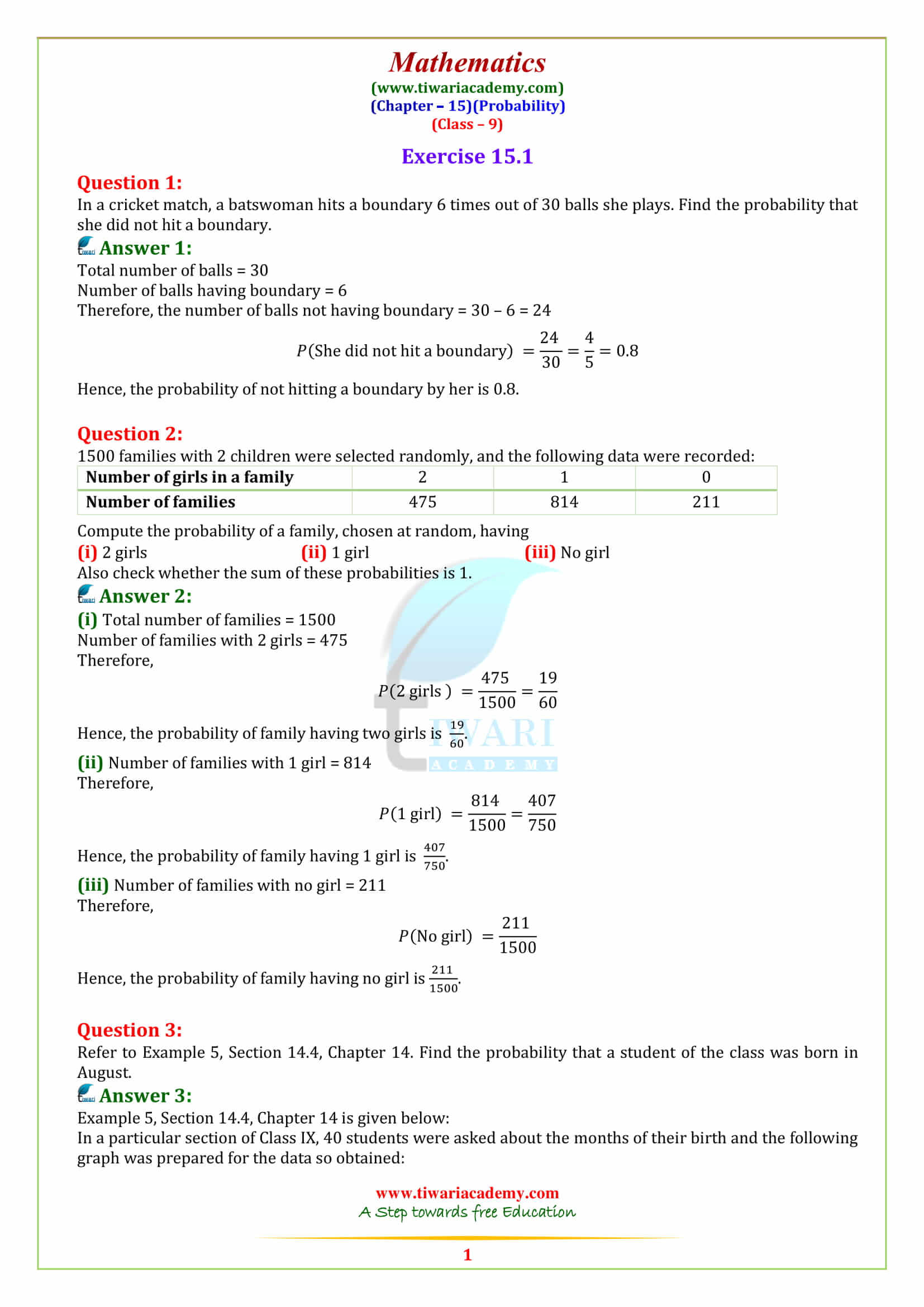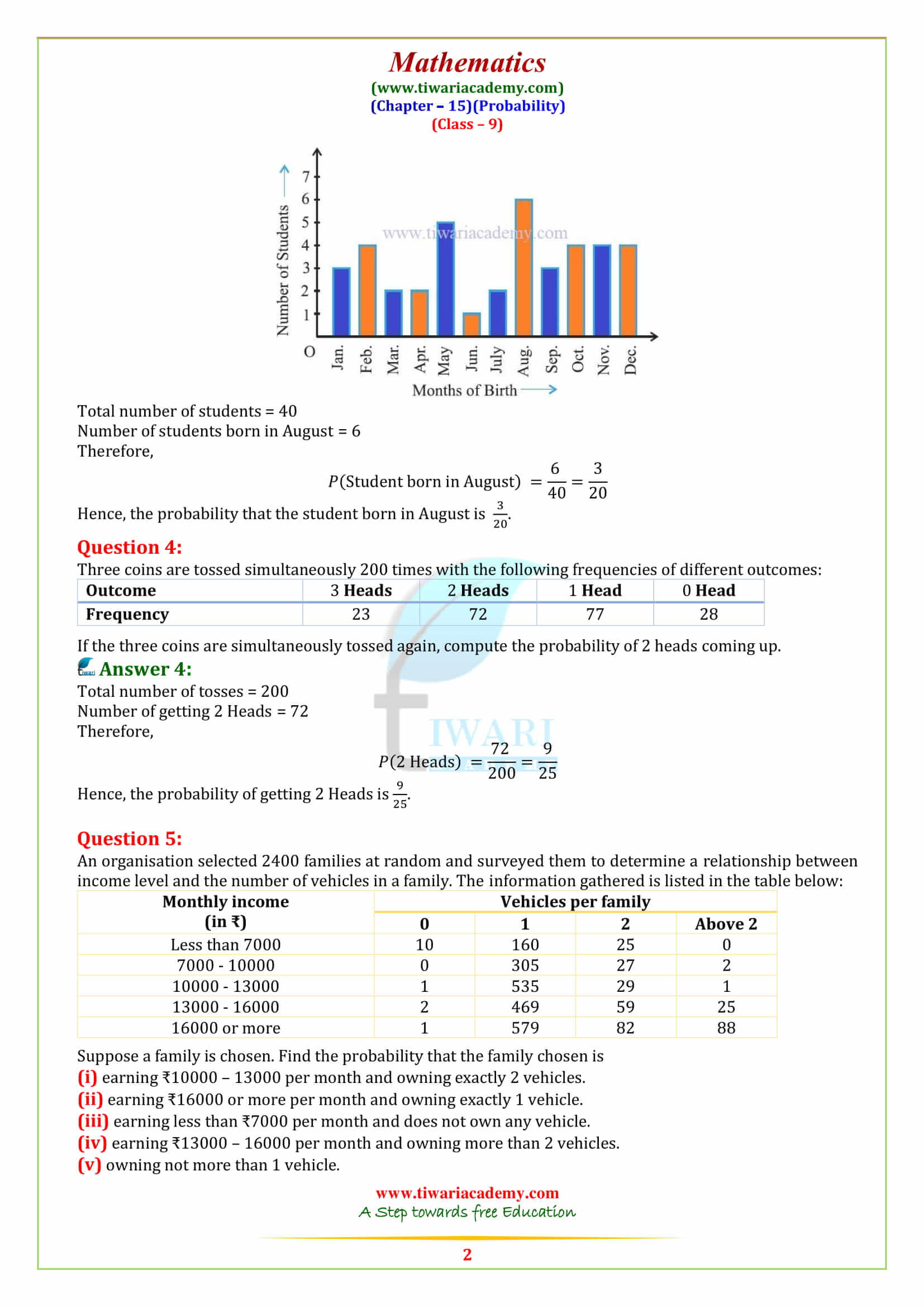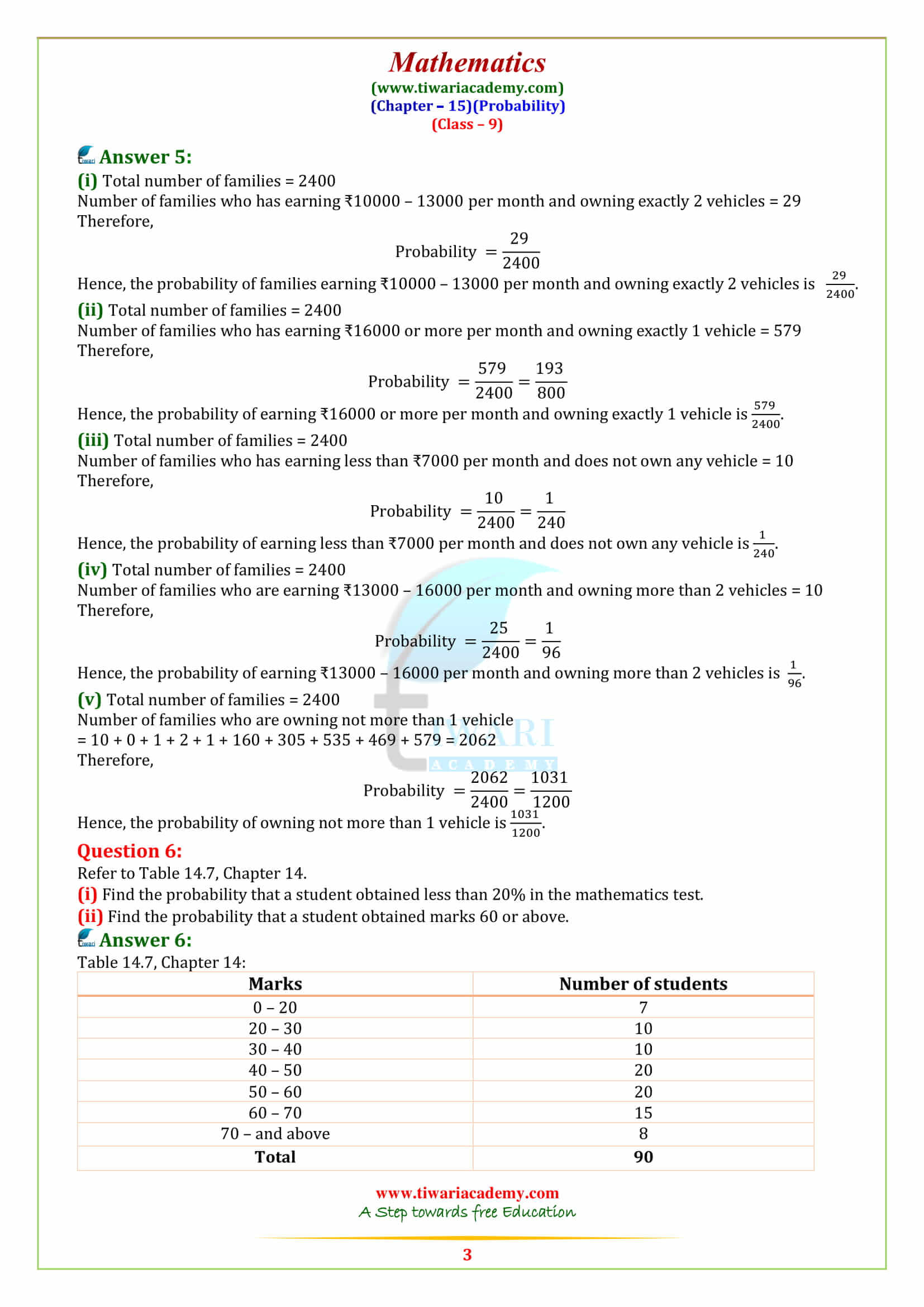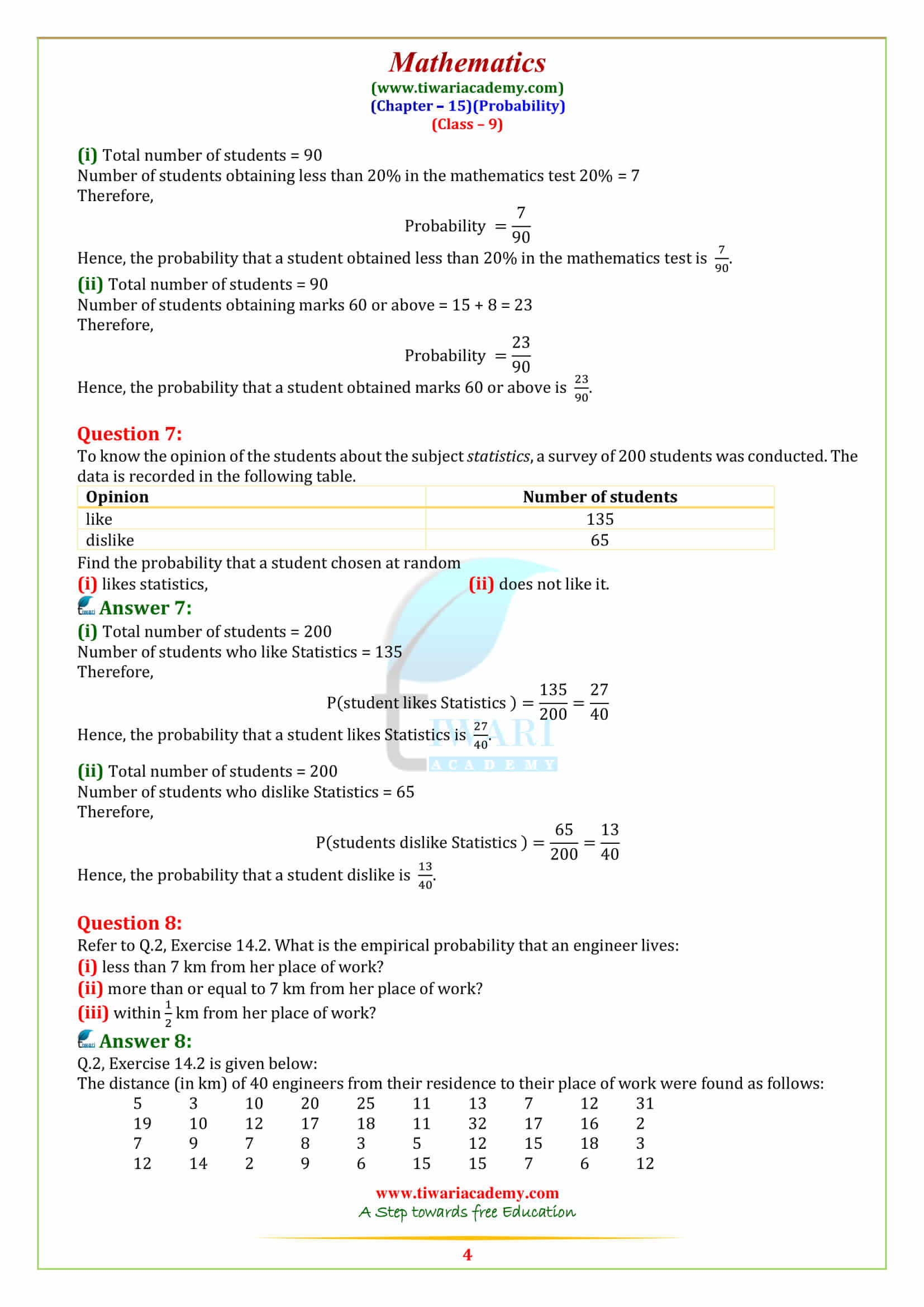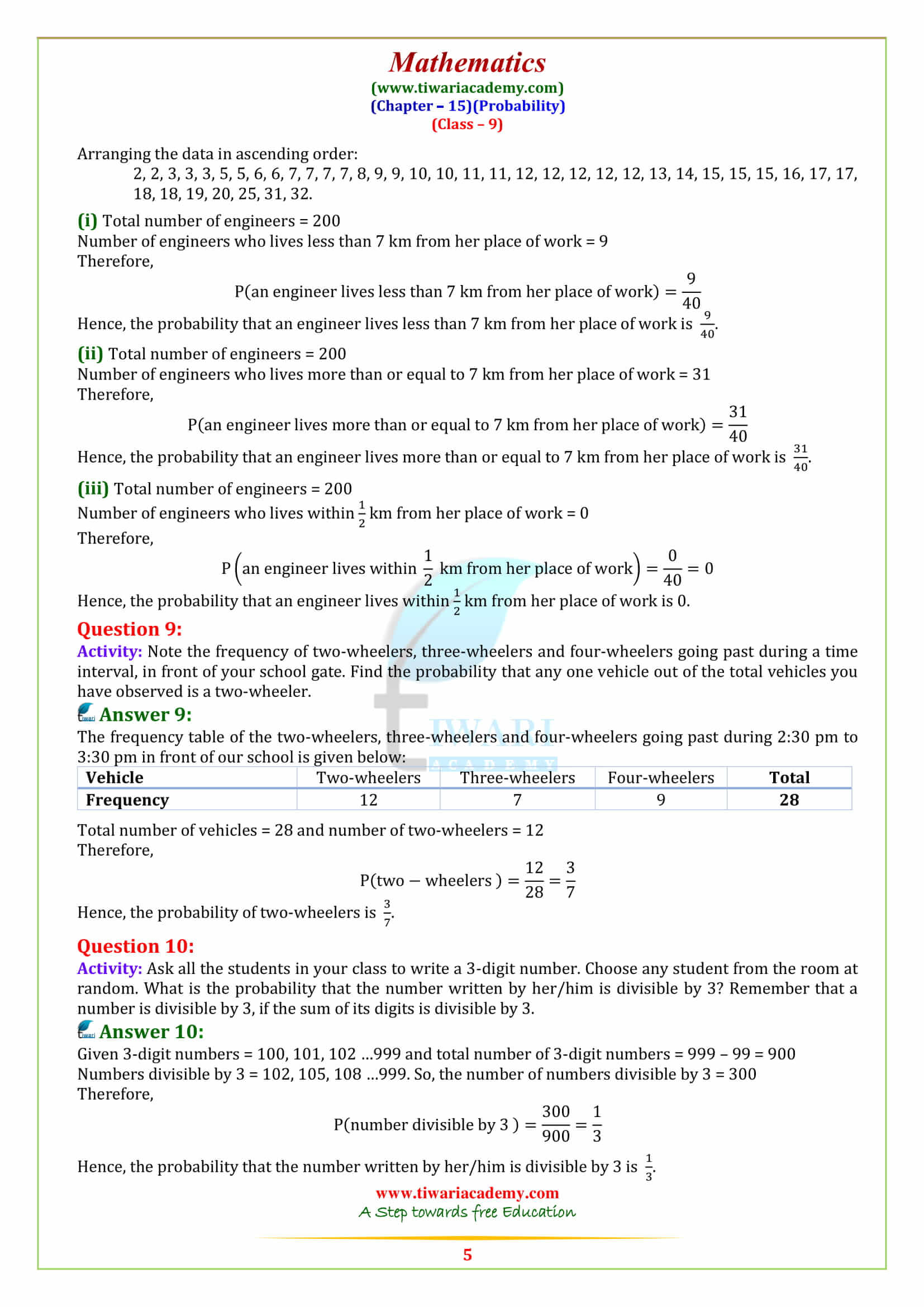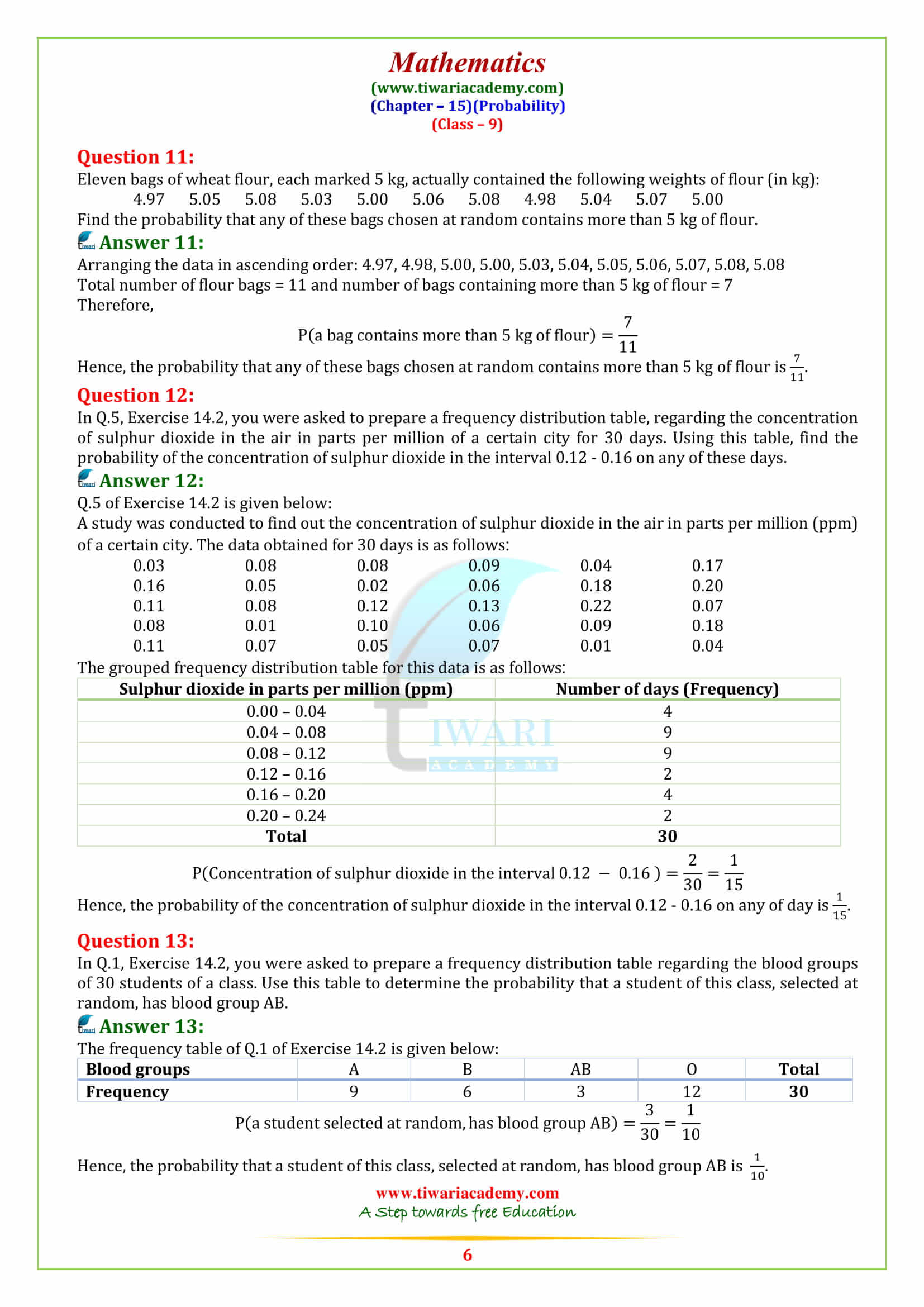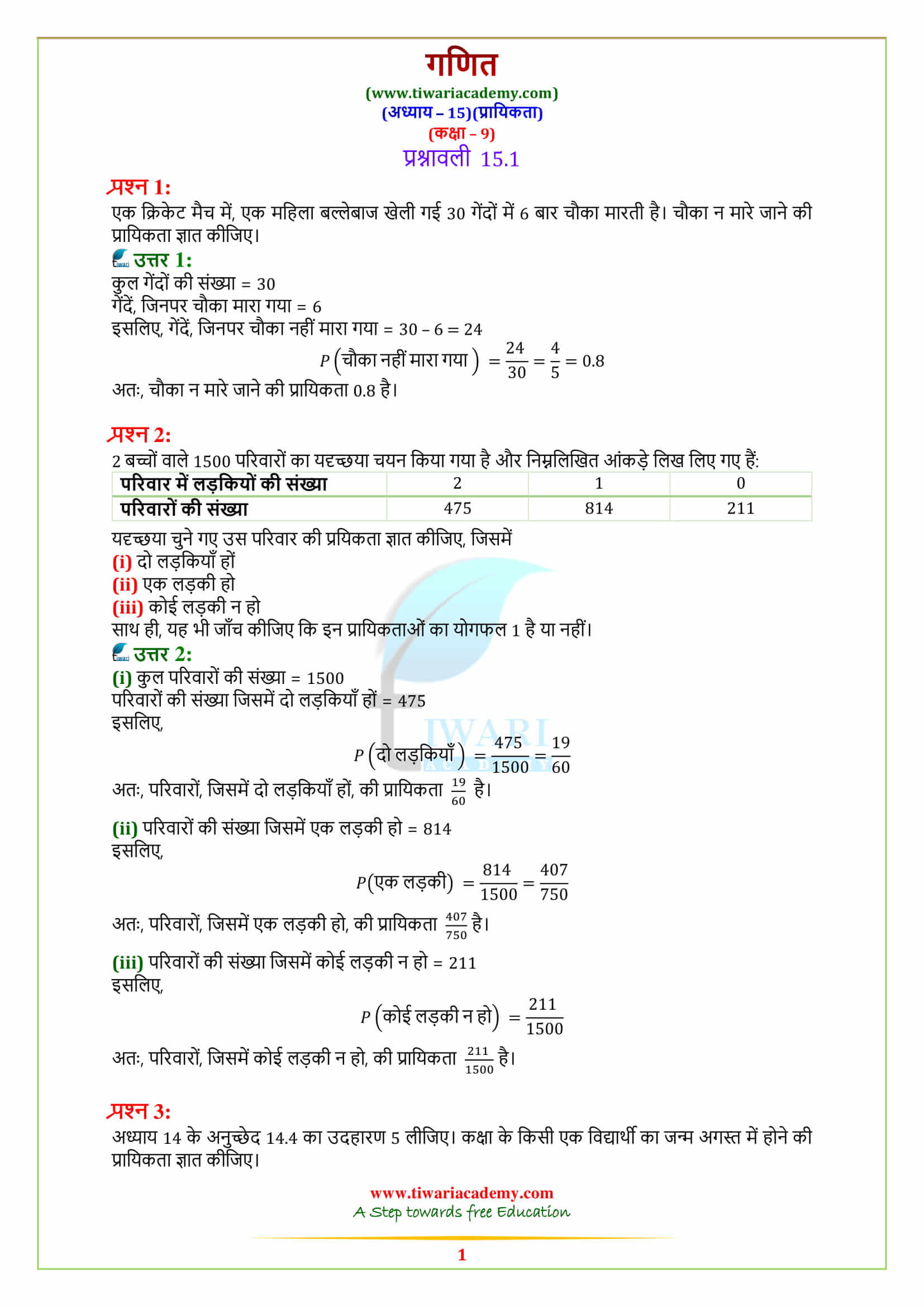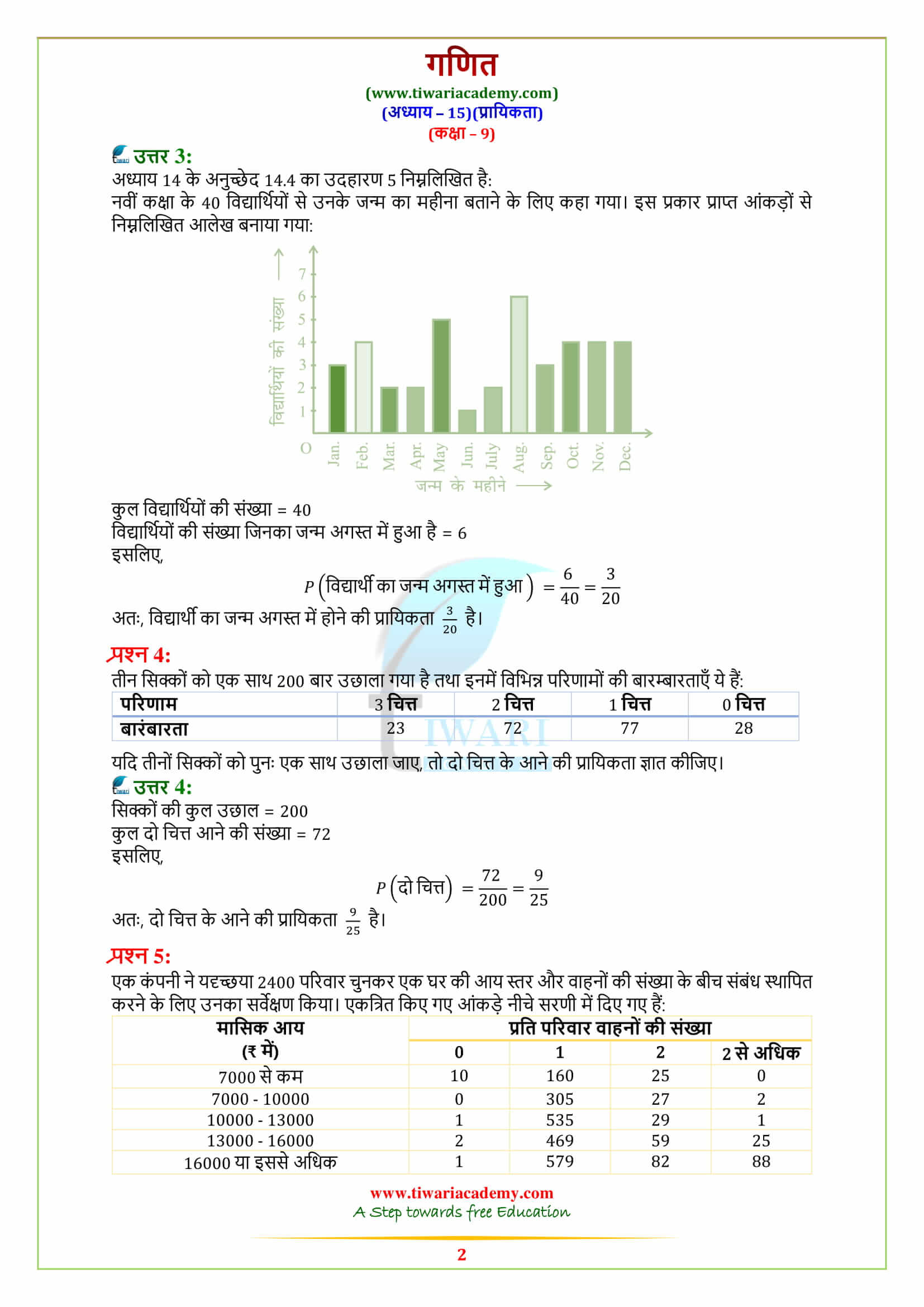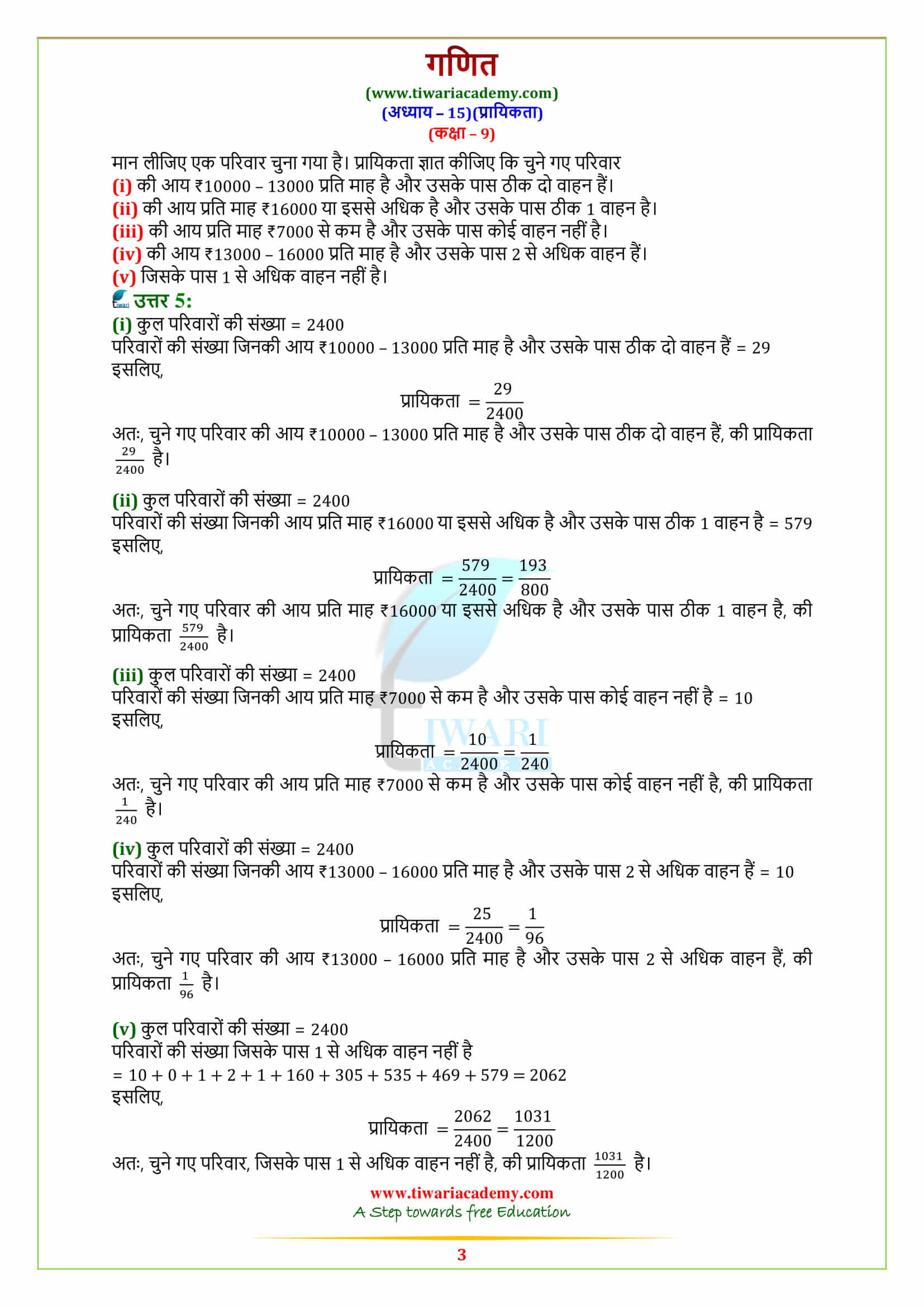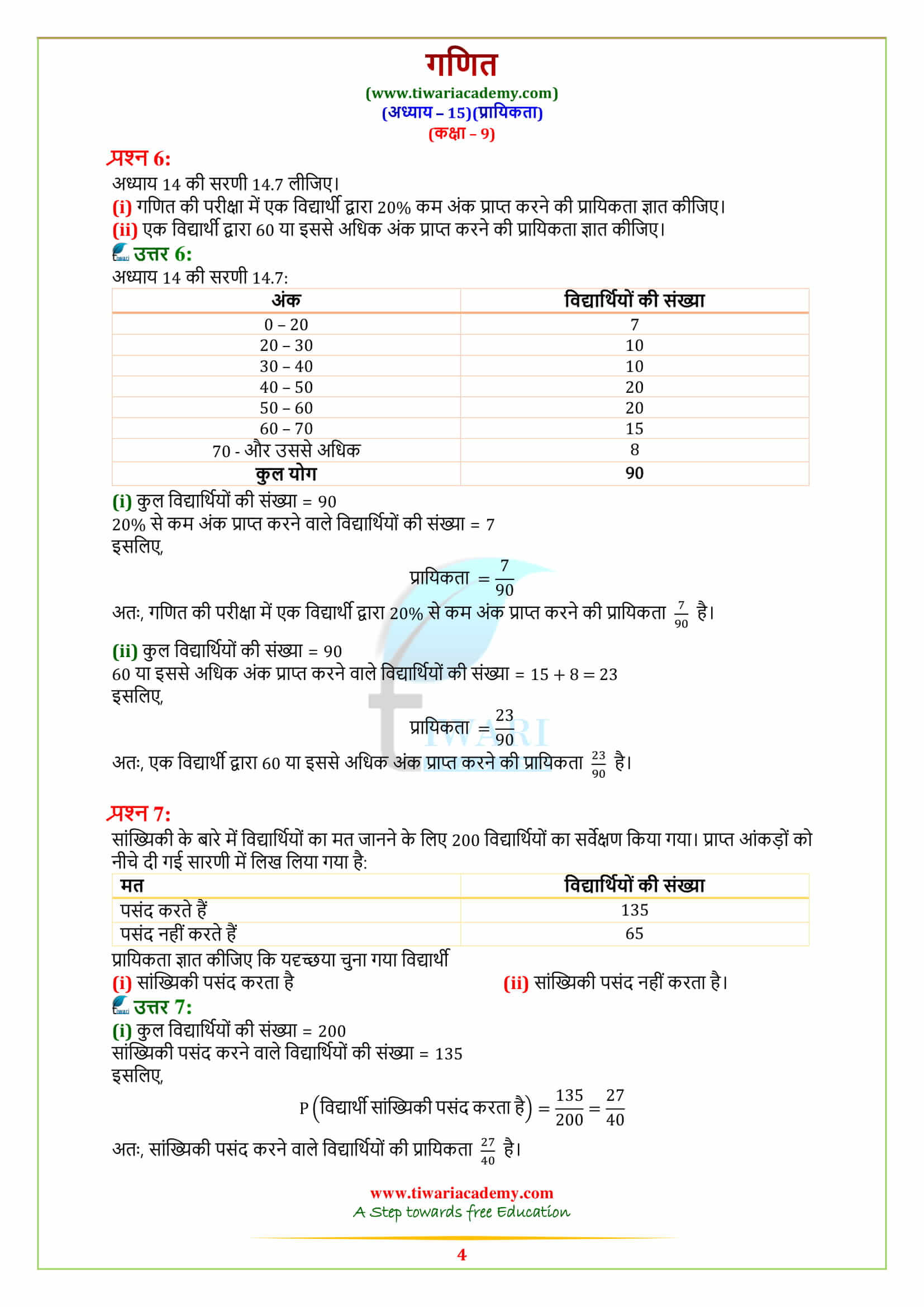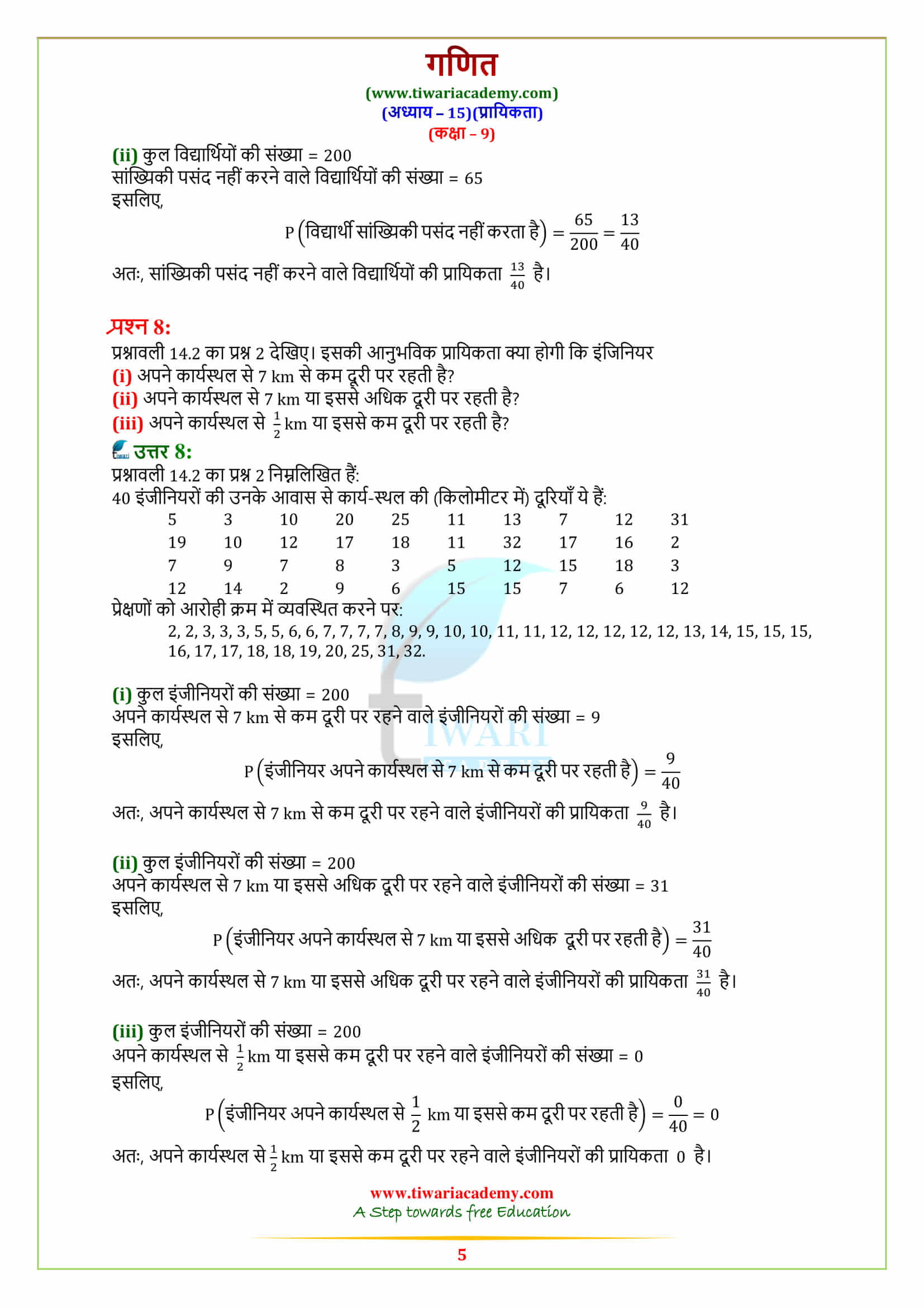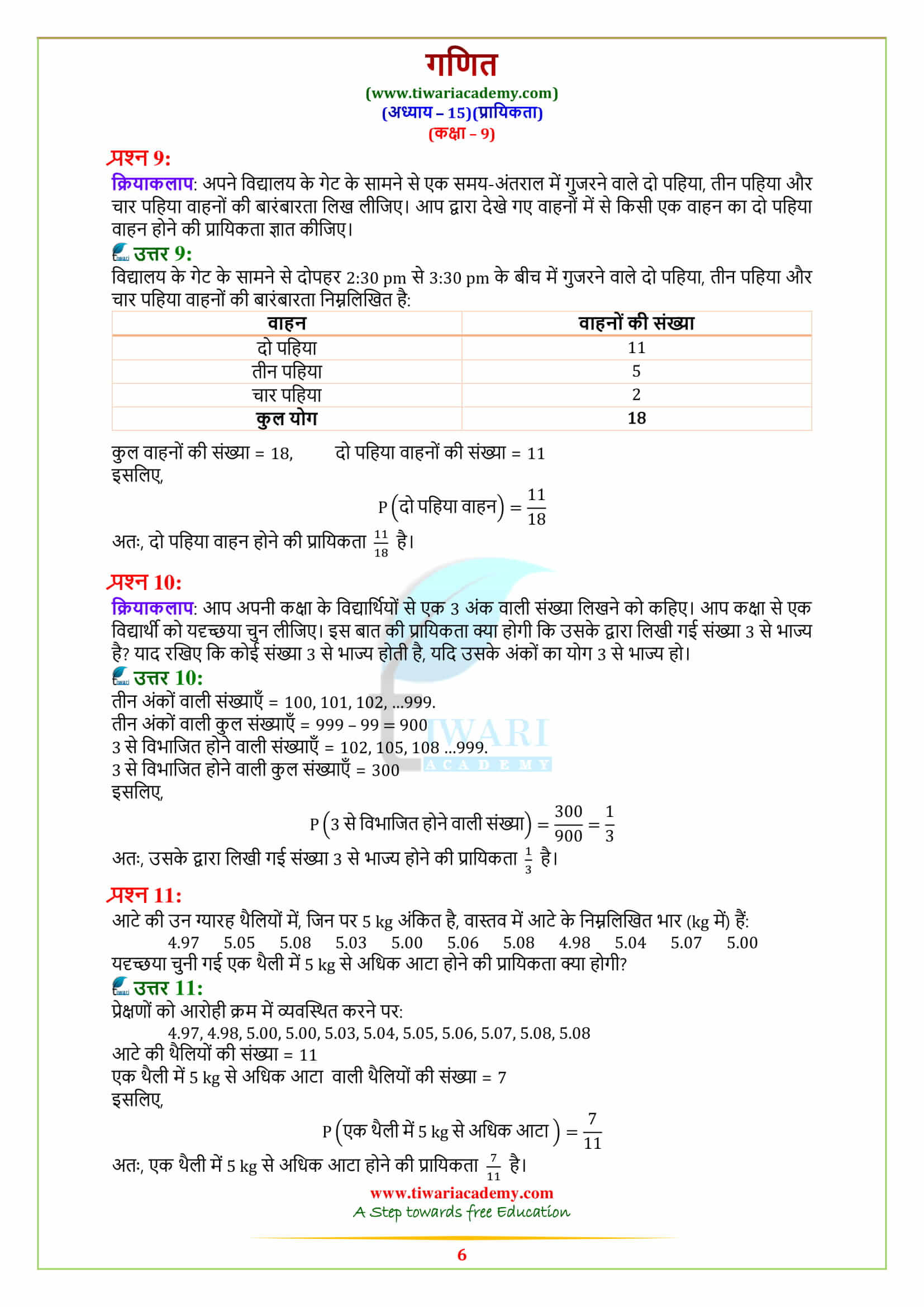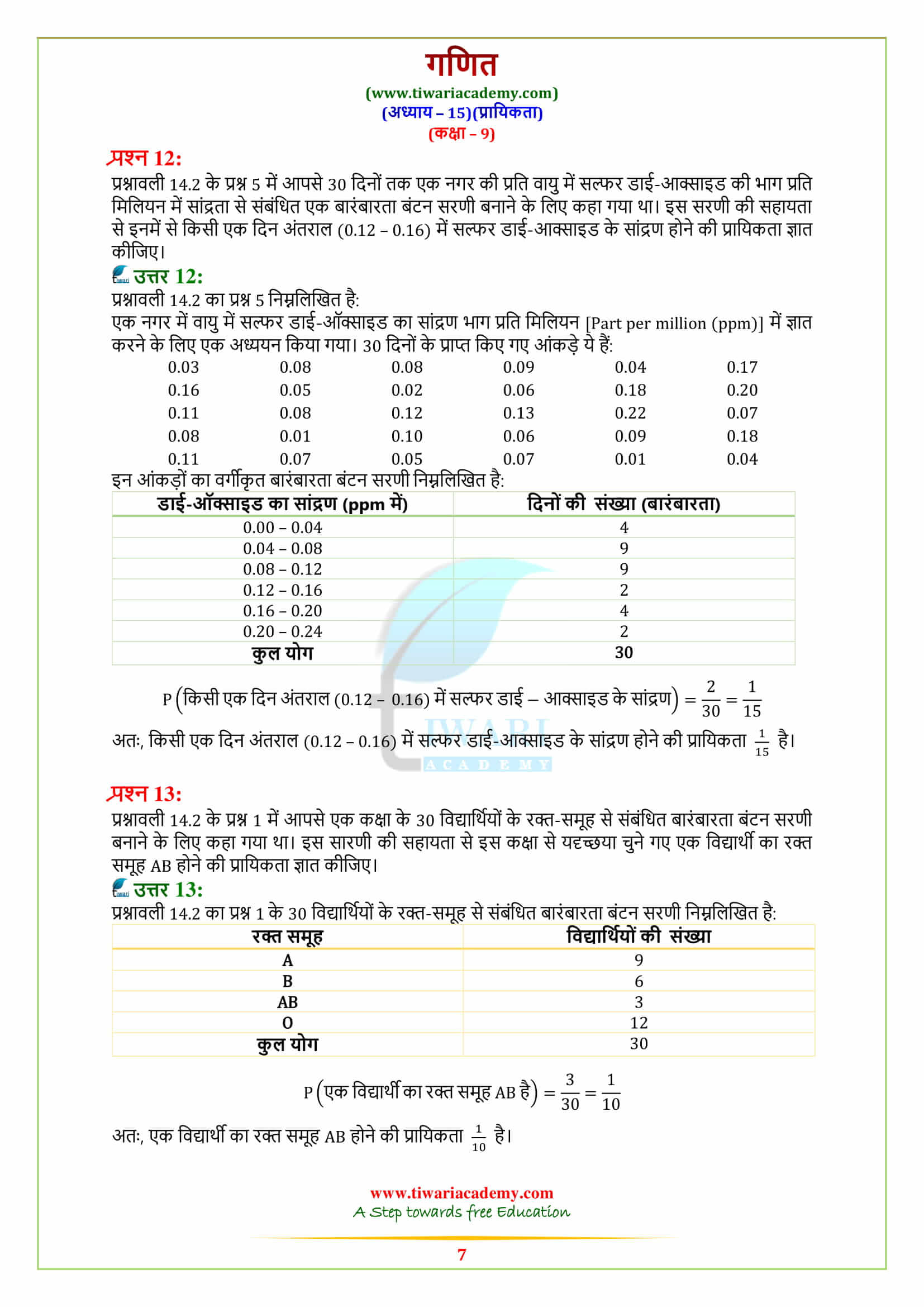NCERT Solutions for Class 9 Maths Chapter 15 Exercise 15.1 Probability in Hindi and English medium updated for CBSE and State boards. Get the latest NCERT Solutions for Class 9 Maths Chapter 15, Exercise 15.1 on Probability. Comprehensive guides in both Hindi and English, perfect for CBSE and State board students. Simplify learning at Tiwari Academy – always free, always updated.
NCERT Solutions for Class 9 Maths Exercise 15.1
All the questions given in exercise 15.1 are solved step by step to make the NCERT (https://ncert.nic.in/) Solutions easy. Students can download these solutions in PDF and video format to use offline.
Probability – Definition and Explanation
Decisions or predictions are completely based on data in the context of numbers. In previous classes, you have already studied the fundamental importance of data. Along with the process of taking out the information that we are looking for. These data are either recorded or handed over by someone to you.
Which makes it easier for users to make predictions. These predictions could be major predictions like – Who wins the elections this year, the rise in the GDP of the Indian economy, the fall in the inflation rate, and more. These mathematical predictions known as probability.
| Class: 9 | Mathematics |
| Chapter: 15 | Exercise: 15.1 |
| Content: | NCERT Question Answers |
| Content Type: | Text and Videos Format |
| Medium: | Hindi and English Medium |
Prediction through Probability
There are everyday small uses of the data to make the prediction. These are the prediction on the data that you collected consciously. There are some of the decisions you made subconsciously, that we often denote by chance, doubt, most probably, and more.
This clearly means that you are making the assumptions. The answer is uncertain, and it could go your way or the other. Sound like a gamble doesn’t it? Mathematicians called it the experimental approach.
Concept of Probability
Most of the chapters in the class 9th Maths have a particular history of origin. Some help in problems or can be applied to real-life solutions. But Probability and statistics have their own separate branch. In exercise 15.1 you will see the picture of two renowned mathematicians who greatly contributed to raising the concept of probability in mathematics.
Origin of Probability in Maths
The theory of probability has its origins in games of chance and gambling or in a gambling dispute in 1654. The problem was proposed by a well-known gambler, Chevalier de Mere, along with prominent mathematician Blaise Pascal, who involved his thoughts with Pierre de Fermat. From that time, there are many changes done in the definition of the concepts been made. However, the main contribution goes to Chevalier de Mere and Blaise Pascal.
Important practices in Exercise 15.1
By now, it is pretty obvious that you must solve the exercise 15.1 questions after completing the concept. This is required to do because most of the questions consist of word problems. Requires you to make tables for the observations and input the formulae to get the solution. Which is an easy way to prepare for the examinations. Questions given in Exercise 15.1 are easy to understand as well as solve.
